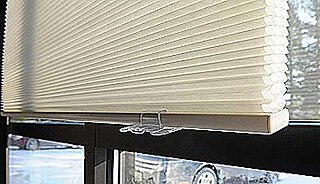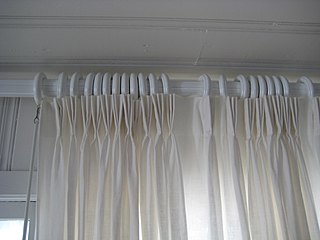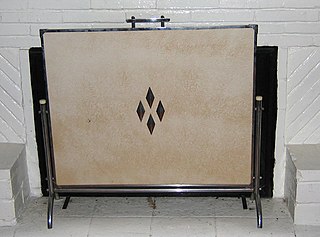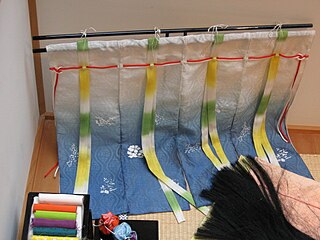 W
WA blanket is a piece of soft cloth large enough either to cover or to enfold a great portion of the user's body. It is usually used when a person goes to sleep or is otherwise at rest. It traps radiant bodily heat that otherwise would be lost through convection, helping to keep the user warm. Many children and adults use a blanket as a comfort object.
 W
WA Bough pot is a vessel for holding stems of flowers and branches to decorate an interior, especially a fireplace during summer. They are typically ceramic, and have a body to hold water, with a number of small openings for the stems in the top. Often the top lifts off. The tulipiere and flower brick are types that allow larger numbers of flowers.
 W
WA carpet is a textile floor covering typically consisting of an upper layer of pile attached to a backing. The pile was traditionally made from wool, but since the 20th century, synthetic fibers such as polypropylene, nylon or polyester are often used, as these fibers are less expensive than wool. The pile usually consists of twisted tufts that are typically heat-treated to maintain their structure. The term carpet is often used in a similar context to the term rug, but rugs are typically considered to be smaller than a room and not attached to the floor.
 W
WCellular shades, also known as honeycomb shades, are a window covering used to block or filter light and insulate windows to help save energy & reduce energy costs. The cell (honeycomb) size can vary. Cell shapes hold trapped air and create a barrier between the window surface and the room. Due to the unavailability of standardized tests, no ranking system exists, but they qualified for a 2011 US energy tax credit.
 W
WA curtain is a piece of cloth intended to block or obscure light, air drafts, or water. A curtain is also the movable screen or drape in a theater that separates the stage from the auditorium or that serves as a backdrop/background.
 W
WA curtain ring is a small clip for suspending a curtain. They hold up curtains of all types, including shower curtains.
 W
WA curtain rod, curtain rail, curtain pole, or traverse rod is a device used to suspend curtains, usually above windows or along the edges of showers or bathtubs, though also wherever curtains might be used. When found in bathrooms, curtain rods tend to be telescopic and self-fixing, while curtain rods in other areas of the home are often affixed with decorative brackets or finial. Special poles can be made for bay windows or made by joining a number of straight and corner bends to fit the shape of a bay window.
 W
WA cushion is a soft bag of some ornamental material, usually stuffed with wool, hair, feathers, polyester staple fiber, non-woven material, or even paper torn into fragments. It may be used for sitting or kneeling upon, or to soften the hardness or angularity of a chair or couch. Decorative cushions often have a patterned cover material, and are used as decoration for furniture.
 W
WDrapery is a general word referring to cloths or textiles. It may refer to cloth used for decorative purposes – such as around windows – or to the trade of retailing cloth, originally mostly for clothing, formerly conducted by drapers.
 W
WA draught excluder is used to eliminate cold draught and slow heat loss. It is placed in the bottom crack of doors and windows.
 W
WA fire screen or fireguard began as a form of furniture that acted as a shield between the occupants of a room and the fireplace, and its primary function was to reduce the discomfort of excessive heat from a log fire. Early firescreens were generally shaped as flat panels standing on attached feet, or as adjustable shield-shaped panels mounted on tripod table legs.
 W
WA kichō (几帳) is a portable multi-paneled silk partition supported by a T-pole. It came into use in aristocratic households during and following the Heian period in Japan when it became a standard piece of furniture. They are similar in appearance to a kabeshiro, but are mounted on a free-standing stand rather than a lintel beam. They are less similar to noren, which do not include streamers to tie them up, and are generally used in different social settings.
 W
WThe Mae West Lips Sofa is a surrealist sculpture in the form of a sofa by Salvador Dalí. The light red, 110 cm × 183 cm × 81.5 cm sized seating furniture made of polyurethane foam coated with a red polidur coating was shaped in 1972 after the lips of actress Mae West, whom Dalí apparently found fascinating. Dalí never intended for the sofa to serve a functional use. He also claimed that he partly based the design of the sofa on a pile of rocks near Cadaqués and Portlligat, where he stayed for many years with his wife, Gala Éluard Dalí. The sofa was produced in 1973 by Bocaccio Design, known also as BD Barcelona Design.
 W
WA mattress is a large, usually rectangular pad for supporting a lying person. It is designed to be used as a bed, or on a bed frame as part of a bed. Mattresses may consist of a quilted or similarly fastened case, usually of heavy cloth, containing materials such as hair, straw, cotton, foam rubber, or a framework of metal springs. Mattresses may also be filled with air or water.
 W
WA mini blind is a type of horizontal window blind made of long, narrow slats held together by string. Its slats are less than half the width of a regular venetian blind, and are often made of aluminium, measuring 15 millimetres (0.59 in) or 25 millimetres (0.98 in). The slats are opened and closed by rotating a rod or by directly pulling a string, and they are raised and lowered by pulling other strings.
 W
WNoren (暖簾) are traditional Japanese fabric dividers hung between rooms, on walls, in doorways, or in windows. They usually have one or more vertical slits cut from the bottom to nearly the top of the fabric, allowing for easier passage or viewing. Noren are rectangular and come in many different materials, sizes, colors, and patterns.
 W
WA pillow is a support of the body at rest for comfort, therapy, or decoration. Pillows are used by many species, including humans. Some types of pillows include throw pillows, body pillows, decorative pillows and many more. Pillows that aid sleeping are a form of bedding that supports the head and neck. Other types of pillows are designed to support the body when lying down or sitting. There are also pillows that consider human body shape for increased comfort during sleep. Decorative pillows used on people, couches or chairs are sometimes referred to as cushions.
 W
WPleated blinds are shades made from a pleated fabric that pull up to sit flat at the top of a window to hide from sight when open.
 W
WA portière is a hanging curtain placed over a door or over the doorless entrance to a room. Its name is derived from the French word for door, porte. From Asia, it came to Europe at a remote date. It is known to have been in use in Europe in the 4th century, and was probably introduced much earlier. Like so many other domestic plenishings, it reached England by way of France, where it appears to have been originally called rideau de Porte.
 W
WA tsuitate (衝立) is a form of single-panel portable partition traditionally used in Japan since at least the 6th century. They may be made of wood, or a wood frame covered in paper or silk cloth. The panels are often illustrated, with paintings on both sides, sometimes by well-known artists. The wood frame may be lacquered, and pricier tsuitate may be very richly decorated, including use of precious metals.
 W
WA window blind is a type of window covering. There are many different kinds of window blinds which use a variety of control systems. A typical window blind is made up of several long horizontal slats of various types of hard material, including wood, plastic or metal which are held together by cords that run through the blind slats. Vertical blinds run along a track system which can tilt open and closed and move side-to-side. Window blinds can be maneuvered with either a manual or remote control by rotating them from an open position, with slats spaced out, to a closed position where slats overlap and block out most of the light. There are also several types of window coverings, called shades, that use a single piece of soft material instead of slats.
 W
WWindow coverings are considered any type of materials used to cover a window to manage sunlight, privacy, additional weatherproofing or for purely decorative purposes.